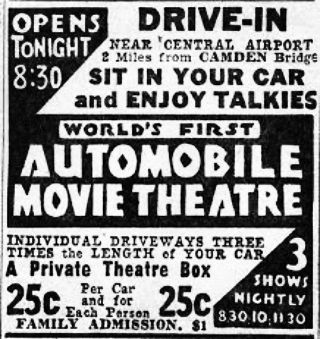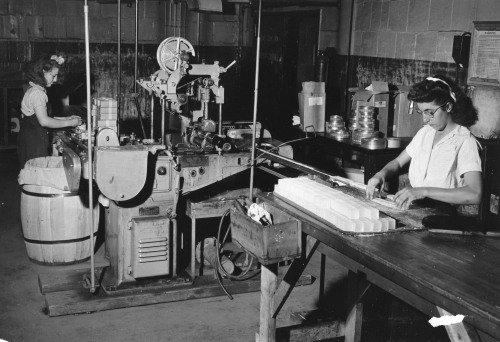#new jersey history
This Week in History:
January 6, 1838 - Samuel Morse demonstrates telegraph
“On this day in 1838, Samuel Morse’s telegraph system is demonstrated for the first time at the Speedwell Iron Works in Morristown, New Jersey. The telegraph, a device which used electric impulses to transmit encoded messages over a wire, would eventually revolutionize long-distance communication, reaching the height of its popularity in the 1920s and 1930s.
Samuel Finley Breese Morse was born April 27, 1791, in Charlestown, Massachusetts. He attended Yale University, where he was interested in art, as well as electricity, still in its infancy at the time. After college, Morse became a painter. In 1832, while sailing home from Europe, he heard about the newly discovered electromagnet and came up with an idea for an electric telegraph. He had no idea that other inventors were already at work on the concept.
Morse spent the next several years developing a prototype and took on two partners, Leonard Gale and Alfred Vail, to help him. In 1838, he demonstrated his invention using Morse code, in which dots and dashes represented letters and numbers. In 1843, Morse finally convinced a skeptical Congress to fund the construction of the first telegraph line in the United States, from Washington, D.C., to Baltimore. In May 1844, Morse sent the first official telegram over the line, with the message: “What hath God wrought!”
Over the next few years, private companies, using Morse’s patent, set up telegraph lines around the Northeast. In 1851, the New York and Mississippi Valley Printing Telegraph Company was founded; it would later change its name to Western Union. In 1861, Western Union finished the first transcontinental line across the United States. Five years later, the first successful permanent line across the Atlantic Ocean was constructed and by the end of the century telegraph systems were in place in Africa, Asia and Australia.
Because telegraph companies typically charged by the word, telegrams became known for their succinct prose–whether they contained happy or sad news. The word “stop,” which was free, was used in place of a period, for which there was a charge. In 1933, Western Union introduced singing telegrams. During World War II, Americans came to dread the sight of Western Union couriers because the military used telegrams to inform families about soldiers’ deaths.
Over the course of the 20th century, telegraph messages were largely replaced by cheap long-distance phone service, faxes and email. Western Union delivered its final telegram in January 2006.
Samuel Morse died wealthy and famous in New York City on April 2, 1872, at age 80.”
This week in History:
January 5, 1933 - Construction on Golden Gate Bridge begins
January 6, 1912 - New Mexico joins Union
January 7, 1927 - Harlem Globetrotters play their first game
January 8, 1946 - Elvis Presley receives first guitar
January 9, 1768 - First modern circus is staged
January 10, 1901 - Gusher signals start of U.S. oil industry
January 11, 1908 - Roosevelt makes Grand Canyon a national monument
This carte-de-visite of Samuel Morse and his telegraph can be found in the online collection of the Wisconsin Veterans Museum.
Post link
On This Day in History June 6, 1933: Richard Hollingshead was granted United States Patent number 1,909,537 on May 16, 1933. What was this patent for? Hollingshead’s patent was for the Drive-In Theater.
Hollingshead would build the first drive-in theater in Pennsauken Township, Camden New Jersey. It would be open for business on June 6, 1933. The first movie shown was the 1932 British Fox Studios comedy “Wives Beware” (entitled “Two White Arms" in the United Kingdom. )
#DriveInTheater #FirstDriveInTheater #RichardHollingshead #CinematicHistory #MovieHistory #AutomotiveHistory #NewJerseyHistory #AmericanHistory #USHistory #History #Historia #Histoire #Geschichte #HistorySisco
https://www.instagram.com/p/CeeZ9Cdumf5/?igshid=NGJjMDIxMWI=
Post link
This #WorkerWednesday, we’re making a visit to the Camphor Plant of E.I. du Pont de Nemours & Company’s Chambers Works facility.
The site, located on the Delaware River in Deepwater Point, New Jersey, was established by the DuPont Company in 1892 for the purpose of manufacturing gunpowder. Between then and when it closed in 2018, the site was used to develop, manufacture, and store a wide variety of chemical products, including Kevlar, nylon, Freon, leaded gasoline, and uranium processing for the Manhattan Project.
Camphor, an aromatic compound produced from the wood of camphor producing plants, or synthetically derived from turpentine, is a versatile product used in mothballs, embalming fluids, perfumes, medicinal products and, in the early years of the plastics industry, as a plasticizer used in the manufacturing of celluloid and plastic lacquers.
This ca. 1945 photograph is part of Hagley Library’s collection of DuPont Company Product Information photographs (Accession 1972.341). The DuPont Company created the Product Information section within the Public Relations department in 1952. Its function was to produce news releases with photographs about DuPont and its products for indirect publicity and advertising purposes.
This collection contains photographs of DuPont Company corporate events and proceedings, product trade shows and fairs, development and manufacturing processes, and the employees and facilities where the products were created. Most of the photographs were taken from the 1930s through the 1950s. This collection has not been digitized in its entirety, but you can view a selection of images online now. Just click here to visit its page in our Digital Archive.
Post link



